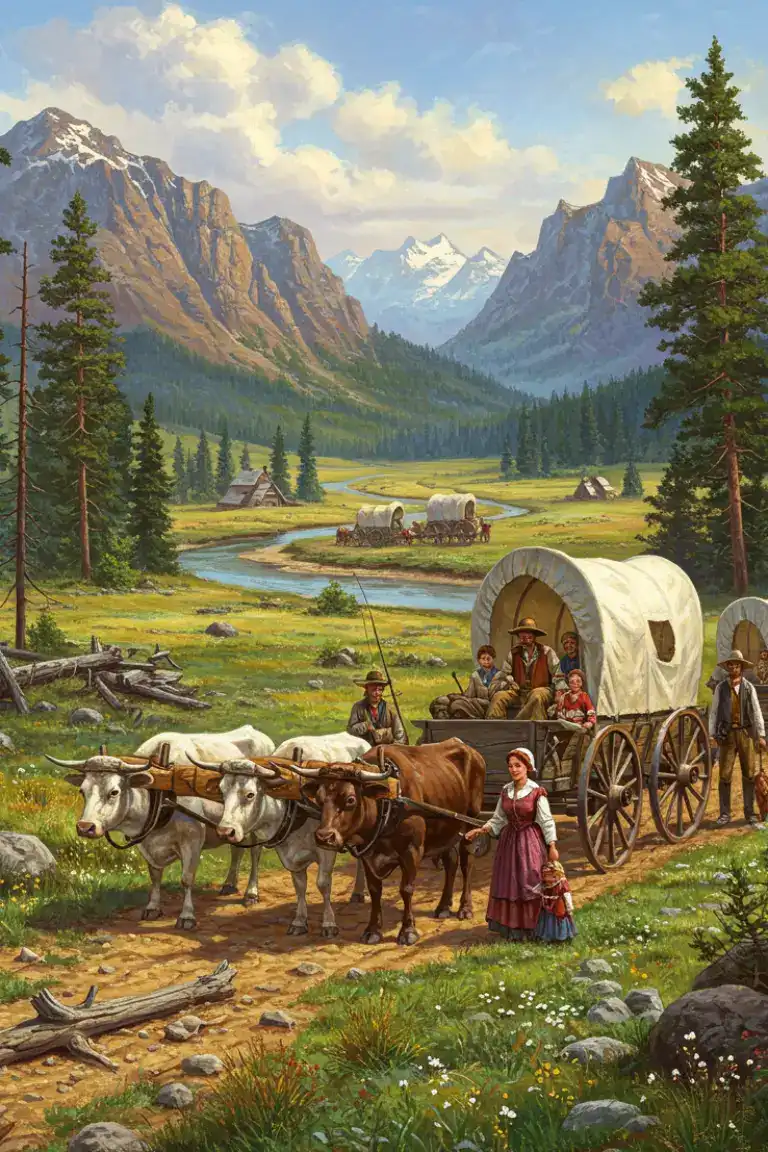The Oregon Trail stands as one of the most iconic chapters in American history, a symbol of courage, endurance, and the unyielding human spirit. Stretching over 2,000 miles from Missouri to the fertile valleys of Oregon, this historic route was a lifeline for thousands of pioneers seeking a fresh start and new opportunities in the mid-19th century. But the journey was far from easy. It was a test of resilience, resourcefulness, and determination, shaping the lives of those who dared to embark on it.
A Path to Possibility
In the early 1800s, the American West was a land of mystery and promise. Stories of lush farmland, abundant resources, and boundless freedom lured families from crowded cities and struggling rural communities to venture westward. The Oregon Trail became the primary route for these dreamers, connecting the eastern United States to the Pacific Northwest.
For many, the decision to leave their homes was not an easy one. It meant selling possessions, saying goodbye to loved ones, and facing an uncertain future. But the promise of fertile land and a chance to build a better life outweighed the risks. The Oregon Trail wasn’t just a road; it was a bridge to hope.
The Journey
The trek along the Oregon Trail was grueling. Travelers faced harsh weather, rugged terrain, and the constant threat of disease. Covered wagons, often referred to as “prairie schooners,” carried families and their most essential belongings. Oxen or mules pulled these wagons at a slow pace, averaging about 15 miles per day.
The trail was dotted with natural landmarks that served as milestones for weary travelers: Chimney Rock, Scotts Bluff, and Independence Rock were not just sights to behold but also markers of progress and reminders of the long journey ahead. Rivers like the Platte and Snake posed significant challenges, forcing pioneers to find ways to ford dangerous waters without losing their wagons or supplies.
Despite the hardships, the trail fostered a sense of community among travelers. Families banded together for safety and support, sharing resources and stories around campfires. These bonds often proved crucial during moments of crisis.

Trials and Tribulations
The dangers of the Oregon Trail were numerous. Cholera outbreaks claimed countless lives, as did accidents involving wagons or livestock. Supplies ran low, and food shortages forced pioneers to ration carefully. The vast open plains could be both a blessing and a curse—offering stunning views but little shelter from storms or scorching sun.
Yet, for every challenge faced, there were moments of triumph. Crossing mountain passes or reaching key landmarks brought a sense of accomplishment and renewed determination. The resilience displayed by these pioneers is nothing short of inspiring.
A Legacy That Endures
By the late 1860s, advances such as the transcontinental railroad made overland travel less necessary, and the Oregon Trail faded into history. However, its legacy lives on. Today, sections of the trail are preserved as historic sites, allowing visitors to walk in the footsteps of those early settlers.
The Oregon Trail represents more than just a route; it symbolizes the pioneering spirit that helped shape America. It is a reminder that great rewards often come from great risks and that determination can overcome even the most daunting challenges.
As we reflect on this chapter of history, we are reminded of the power of human ambition and the enduring quest for a better life. The Oregon Trail wasn’t just about reaching a destination—it was about the journey itself and the unbreakable spirit of those who dared to dream big.
Whether you’re a history enthusiast or simply curious about the past, the story of the Oregon Trail offers valuable lessons about perseverance and hope. It’s a tale worth revisiting—a testament to what can be achieved when we dare to chart new paths.





